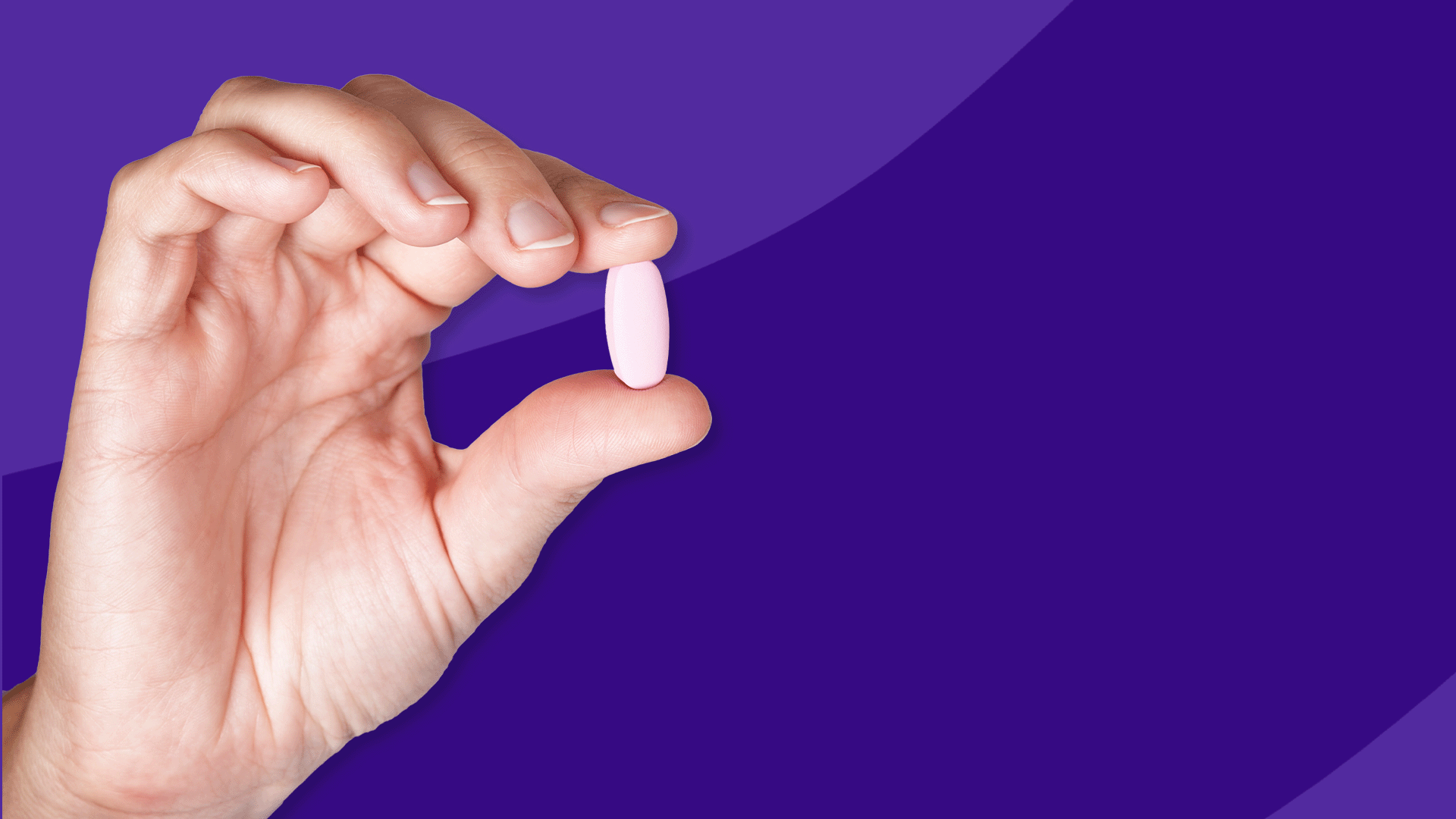Common fluconazole side effects | Serious side effects | Stomach pain | Nausea | Rash | Headache | Side effects timeline | Contraindications | Warnings | Interactions | How to avoid side effects | How to treat side effects
Fluconazole, also prescribed as brand-name Diflucan, is a generic prescription drug used to treat fungal infections. Specifically, the FDA has approved fluconazole to treat yeast infections—Candida infections of the mouth, esophagus, and vagina—as well as cryptococcal meningitis, a yeast infection of the membranes that surround and protect the brain and spinal cord. While many common antifungal medications are topical, and only applied to the skin, fluconazole is used systemically; that is, it is taken as an oral tablet or suspension, or given as an injection, so that the whole body is affected. That means side effects are more likely than when using topical antifungals. Even so, many people on fluconazole won’t experience side effects. Those who do will generally have only mild or moderate issues.
Common side effects of fluconazole
The types and severity of fluconazole side effects will depend on whether the drug is administered as a single large one-day dose (for vaginal candidiasis), a double dose (for initial injections), or multiple doses spread out over several days. As can be expected, a single large dose is more likely to cause side effects. Headache is the most common side effect in people receiving a single large dose (13% incidence), while nausea is the most common side effect in people taking multiple smaller doses (3.7% incidence). Immune-compromised or HIV/AIDS patients are more likely to experience fluconazole side effects.
The most common side effects of fluconazole are:
- Headache
- Nausea
- Skin rash
- Vomiting
- Abdominal pain
- Diarrhea
- Acid indigestion
- Dizziness
- Changes in how things taste
Serious side effects of fluconazole
Though rare, the most serious side effects of fluconazole include:
- Liver problems
- Seizures
- Decreased white blood cell or platelet counts
- Heart rhythm changes
- Decreased adrenal gland function
- Severe allergic or skin reactions
Stomach pain
Abdominal pain is a common side effect of fluconazole, but it’s more likely if the drug is administered as a single large dose. In clinical trials, approximately 6% of people getting one large dose complained of stomach pain. When given smaller doses over several days, only 2% of participants complained of abdominal pain. Unless it’s too hard to take, stomach pain is not health-threatening. If it’s too debilitating, talk to the prescribing healthcare provider.
Nausea
Again, nausea is more likely to happen when given a single large dose of fluconazole. In clinical trials, the incidence was 7%. For people receiving multiple small doses, nausea affected only about 4% of participants. Nausea is a common problem with prescription drugs, but it is usually not health-threatening.
Rash
Skin rash is an uncommon side effect of fluconazole and mainly occurs in people taking fluconazole over several days. About 2% of people taking multiple doses in the clinical trials experienced skin rash. By itself, a skin rash is not a medical emergency, but it could be an initial sign of a serious and even life-threatening skin reaction to the drug. Immediately contact the prescribing healthcare provider or another healthcare professional if a rash appears when taking fluconazole.
Headache
Headache is the most common side effect in people given a single large dose of fluconazole. About 13% of people given a large dose will have problems with headache, while the incidence drops to 1.9% of people taking multiple small doses. Fluconazole-induced headaches are not by themselves a medical emergency and can be treated with over-the-counter pain relievers. Patients who experience headaches can consult their pharmacist or doctor if they need help selecting a pain reliever.
How soon do fluconazole side effects start?
Fluconazole side effects such as headache, nausea, and stomach pain can start quickly when given an injection. When fluconazole is taken by mouth, minor side effects could appear within an hour or two, the amount of time it normally takes an oral dose of fluconazole to hit its peak in the bloodstream.
How long do fluconazole side effects last?
Fluconazole is a short-term, time-limited treatment. It can be given as a single large dose or as multiple daily doses for one to three weeks. Most people, then, can expect side effects to resolve when treatment stops. However, it takes some time for the body to clear a dose. Healthy people clear fluconazole in about five days, but it may take two to three weeks in people with kidney disease. Serious but rare adverse effects like lowered white blood cell counts or adrenal insufficiency may take several weeks to recover from.
What are the long-term side effects of fluconazole?
Fluconazole is a time-limited treatment for most people. However, in some cases, fluconazole is used over the long term to prevent a recurrence of certain fungal infections. Most chronic users will experience side effects due to long-term use; the most common are dry skin, dry eyes, dry mouth, hair loss, and fatigue. Healthcare providers may need to reduce the dose or switch to another antifungal.
Fluconazole contraindications
Fluconazole is never prescribed to people who are allergic to the drug. Fluconazole should not be taken with certain medications like erythromycin, pimozide, or quinidine. This is because heart rhythm problems can occur when they are taken together.
People with various sugar problems, like fructose intolerance, are never given fluconazole oral suspension because of the sugars mixed in with it. However, they can safely take tablets or get injections.
Pregnancy
Healthcare professionals avoid giving fluconazole to women in the first trimester of pregnancy because of the risk of birth defects. Because of this risk, women of reproductive age should use contraception during fluconazole treatment to avoid getting pregnant. Though occasionally prescribed to mothers, if needed, later in a pregnancy, there’s still a risk of spontaneous abortion up to week 22. In general, pregnant women and their healthcare providers have to weigh the pros and cons of fluconazole treatment before making a decision.
Breastfeeding
Healthcare providers are cautious about administering fluconazole to breastfeeding mothers. Fluconazole is present in breast milk but at levels below the FDA-approved dose for infants. Women who are breastfeeding should consult their healthcare provider for guidance.
Older adults
Healthcare professionals are urged to use caution using azole antifungal medications like fluconazole in people ages 65 years and older. Guidelines call for seniors to receive the lowest possible dose for the shortest period. Several issues may cause problems, including kidney problems/poor clearance of the drug, drug interactions, and changes in the heart’s rhythm.
Children
The Food and Drug Administration (FDA) has approved fluconazole for children of all ages including newborns.
Fluconazole warnings
Though problems are uncommon with fluconazole, they are possible. Some situations, though, make problems more likely.
Cautions
Some medical conditions may worsen during fluconazole therapy. Others may increase the chance of side effects. The greatest hazard involves changes to the heart’s rhythm, particularly a lengthening of the time it takes for the heart to relax after it starts contracting, called QT prolongation. This prolongation can be hazardous and even life-threatening, so fluconazole is used cautiously in anyone with a heart rhythm problem (or a family history of heart rhythm problems). Electrolyte imbalance, particularly low potassium, also increases the risk of throwing off the natural rhythm of the heart when fluconazole is taken.
Kidney disease and liver disease can slow the body’s ability to eliminate fluconazole from the body. As a result, fluconazole levels can build up in the body, increasing the risk of side effects. Doses may need to be adjusted.
Abuse and dependence
Fluconazole is not a controlled substance. It is not a medication that risks abuse or physical dependence (or withdrawal when discontinued).
Overdose
Call the prescriber or go to an emergency room if too much fluconazole is taken. Some people have experienced hallucinations and paranoia after a fluconazole overdose.
Fluconazole interactions
As with all prescription drugs, fluconazole may cause side effects or worse when combined with other drugs. The most concerning are drugs that build up in the body because fluconazole is a moderate inhibitor of the enzyme that breaks down these drugs. Some of these drugs can cause serious side effects when they’re not properly broken down. A number of these drugs are contraindicated for use with fluconazole because the combination is just too dangerous. These include:
- The heart rhythm drugs quinidine and dronedarone
- The antibiotic erythromycin
- The antipsychotic medication pimozide
- Tramadol, an opioid pain reliever
- And several others
Other drugs can also build up in the body when fluconazole is being taken. These are less hazardous than contraindicated drugs, but doses may need to be adjusted. These include:
- Certain oral diabetes drugs that lower blood sugar such as glimepiride, glipizide, and glyburide
- Some blood pressure medications such as losartan
- Statins such as atorvastatin
- Some immune system suppressants such as tacrolimus
- Anticonvulsants such as phenytoin and carbamazepine
- Opioids such as fentanyl and methadone
- Tricyclic antidepressants such as amitriptyline
- The blood thinner warfarin
- The asthma medication theophylline
- Chemotherapy drugs known as alkaloids such as vincristine and vinblastine
- Vitamin A supplements and retinoids
Caffeine is another substance that can build up in the body during fluconazole treatment. It’s not a health threat, but drinking coffee and other caffeinated drinks will have slightly more pronounced and longer-lasting effects when combined with fluconazole.
Tuberculosis antibiotics such as rifampin could reduce fluconazole’s effectiveness, so the dose of fluconazole may need to be increased.
Finally, healthcare professionals are discouraged from using more than one azole antifungal at a time. These include ketoconazole, voriconazole, and itraconazole. They all work more or less the same way, so combining them is like doubling or tripling the dose of one.
How to avoid fluconazole side effects
Many people will experience mild side effects, or none at all, when taking fluconazole. When there are side effects, they’re usually manageable. Here are some useful ways to minimize the possibility:
1. Follow the directions
Follow all the instructions for taking fluconazole given by the prescriber or written on the prescription label. Above all, don’t take more than instructed. Sometimes, a dose will be missed. It can be taken when remembered, but not if it’s almost time for the next dose. In that case, skip the missed dose. Take the next dose as scheduled.
2. Make sure the prescriber has a complete medical history
Medical conditions, both current and past, may affect whether fluconazole causes problems, so make sure the prescriber is aware of these conditions, particularly:
- Heart disease
- Heart rhythm problems
- Low potassium or other electrolyte imbalances
- Liver problems
- Kidney problems
- Pregnancy or pregnancy plans
- Breastfeeding or breastfeeding plans
3. Make sure the prescriber is aware of all medications being taken
Fluconazole has many possible drug interactions. Most increase the likelihood of side effects from the other drugs being taken. For this reason, the prescriber needs to know all the prescription drugs, over-the-counter medications, and vitamins or dietary supplements being taken. The list of problem drugs is long, so the best advice is to leave nothing out.
4. Check with the prescriber before starting other medications
Because fluconazole can cause problems with so many other drugs and supplements (see #3), don’t start anything new until getting medical advice from the prescribing healthcare provider.
5. Take fluconazole with food
Fluconazole tablets or oral solution can be taken with or without food. If nausea is a problem, try taking each dose with a snack or meal.
6. Avoid some pain relievers
Fluconazole could increase side effects like stomach pain caused by NSAIDs like ibuprofen and naproxen. This is not a serious drug interaction, but using acetaminophen for pain or fever instead may help prevent stomach pain.
How to treat side effects of fluconazole
Many people will avoid fluconazole’s side effects. When they do happen, there are ways to manage them.
Headache
Taking an over-the-counter pain reliever such as acetaminophen is okay. Some people cannot take certain medications, so check with your healthcare provider or pharmacist if you’re not sure what you can take. Drinking plenty of fluids and resting in a cool, dark, quiet room can also help.
Stomach pain
For stomach pain, a heating pad may help relieve the problem. If the pain is too debilitating, talk to a healthcare professional.
Liver problems
Fluconazole can cause serious liver problems, so contact a healthcare professional if any symptoms of liver dysfunction are noticed such as:
- Foul-smelling or dark urine
- Pale/clay-colored stools
- Vomiting
- Tiredness
- Loss of appetite
- Yellowing of the skin or whites of the eyes
Severe allergic or skin reactions
While rare, severe, life-threatening allergic or skin reactions may occur. Patients taking fluconazole should be alert to symptoms of an allergic reaction such as hives, difficulty breathing, or swelling of the face, lips, tongue, or throat. Patients should also be alert to symptoms of a serious skin reaction such as fever, burning eyes, sore throat, red or purple rash, or blistering or peeling skin. Emergency medical attention is required for patients experiencing an allergic or skin reaction.
Sources
- Fluconazole, Epocrates
- Fluconazole drug summary, Prescriber’s Digital Reference
- Fluconazole injection prescribing information, U.S. National Library of Medicine
- Fluconazole tablet prescribing information, U.S. National Library of Medicine
- Tolerability of long-term fluconazole therapy, The Journal of Antimicrobial Chemotherapy











